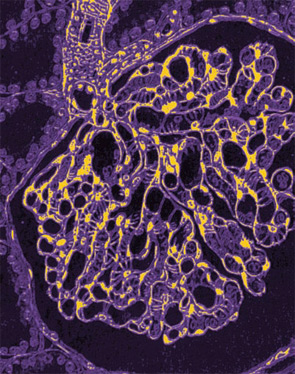
A team of rheumatologists, nephrologists, and pathologists is currently at work on the first-ever ACR guidelines for the screening, diagnosis, and treatment of lupus nephritis. The new guidelines are scheduled for publication this fall and will review modern studies that meet standards of high levels of evidence as well as expert opinion to make recommendations for use by rheumatologists in clinical practice.
Bevra Hahn, MD, chief of rheumatology at the University of California, Los Angeles School of Medicine and former President of ACR, is leading the guideline development committee. She says that the driving force behind the creation of these guidelines now is the recent publication of several high-quality clinical trials on the treatment of the disease, an indicator that it is time to make recommendations on treatment.
“These new guidelines are designed for the practicing physician so they will be concise and they will, as modern guidelines all do, make recommendations and indicate what the level of evidence is. The clinician reading it will be able to see which recommendations are backed by strong evidence, and which are backed by [expert] opinion,” says Dr. Hahn.
The guideline development committee is currently in the process of editing the first draft of the paper. After it moves through these revisions, it will be submitted to the ACR for edits and approvals. “There are a lot of people that need to agree on the guidelines,” Dr. Hahn stresses.
Gathering Data
Initial processes began with a review of the last 20 years of literature in lupus nephritis by an expert panel of the guideline development committee. This process included a review of all prospective clinical trials and cohort studies with large numbers of patients that examined only studies of products currently available for treatment of the disease. These results were passed to the expert panel, which met after the 2010 ACR/ARHP Annual Scientific Meeting in Atlanta to vote on scenarios “as a clinician would see them in the office,” Dr. Hahn said. These scenarios included real-world circumstances such as who should have a biopsy, what the criteria for diagnosis should be, what the treatments are, and what the recommendations for monitoring how patients are responding to these treatments would be.
For clinicians who don’t see many patients with lupus nephritis, it will be helpful because it will be an update on the state of the art. For clinicians quite experienced with lupus nephritis … hopefully it will confirm what [they] are already doing.
—Bevra Hahn, MD

